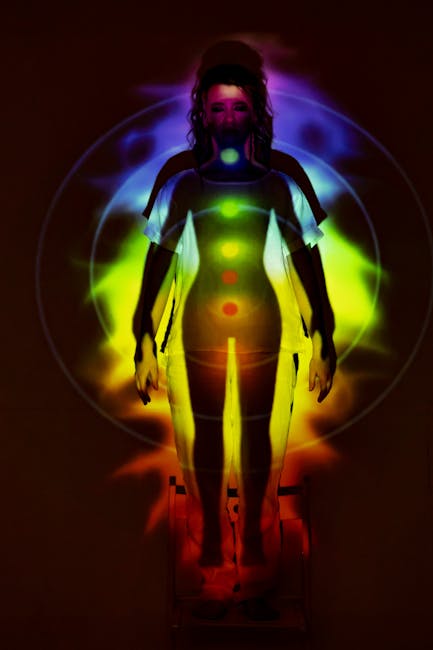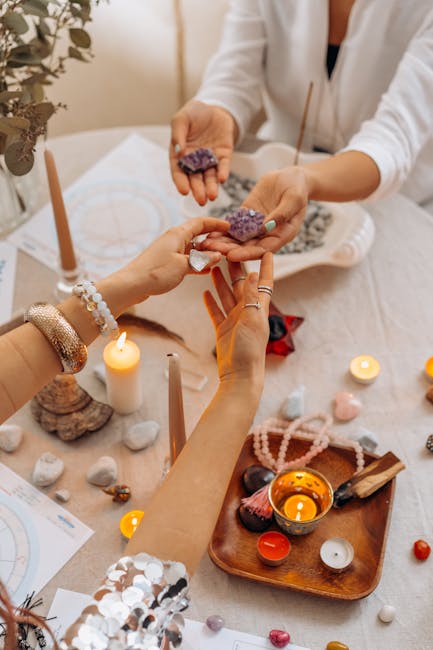I. Introduction
Chakras, derived from the Sanskrit word for ‘wheel’, are energy centers within the human body that help regulate all its processes, from organ function to the immune system and emotions. Seven chakras are positioned throughout your body, from the base of your spine to the crown of your head. Each chakra has its own vibrational frequency, color, and governs specific functions that help make you, well, human.
Chakra activation is a practice that focuses on balancing these energy centers to promote overall well-being. It is an essential aspect of holistic healing and plays a significant role in maintaining physical, emotional, and spiritual health. Activating your chakras can lead to increased self-awareness, emotional stability, and a sense of inner peace. #ChakraActivation
II. Understanding the Seven Chakras
A. Root Chakra
The Root Chakra, also known as Muladhara, is located at the base of the spine. It is associated with feelings of safety, grounding, and physical identity. When this chakra is balanced, you feel secure, connected, and confident in your physical existence.
Signs of imbalance may include feelings of fear, anxiety, and instability. To activate the Root Chakra, practices such as grounding exercises, physical activity, and focusing on the color red can be beneficial.

Photo by Mikhail Nilov on Pexels
B. Sacral Chakra
The Sacral Chakra, or Svadhisthana, is located in the lower abdomen. It is linked to creativity, sexual energy, and emotional well-being. When balanced, this chakra promotes feelings of wellness, abundance, pleasure, and joy.
Signs of imbalance can include emotional instability, fear of change, sexual dysfunction, depression, or addictions. Techniques for activation include pelvic thrusts, hip openers, and focusing on the color orange. #EnergyBalance
C. Solar Plexus Chakra
The Solar Plexus Chakra, or Manipura, is located in the upper abdomen. It is associated with self-confidence, self-discipline, and wisdom. When balanced, this chakra fosters personal power, mastery of oneself, and the ability to achieve.
Signs of imbalance can include low self-esteem, difficulty making decisions, and anger or control issues. Activation techniques include practicing core work, breath work, and focusing on the color yellow. #MindBodyConnection
D. Heart Chakra
The Heart Chakra, or Anahata, is located at the heart center. It is associated with love, compassion, and kindness. When balanced, this chakra promotes feelings of peace, love, compassion, and forgiveness.
Signs of imbalance can include over-loving to the point of suffocation, jealousy, abandonment, anger, and loneliness. Activation techniques include chest openers, arm balances, and focusing on the color green. #InnerHarmony

Photo by Mikhail Nilov on Pexels
E. Throat Chakra
The Throat Chakra, or Vishuddha, is located at the throat. It is associated with communication, self-expression, and truth. When balanced, this chakra promotes clear communication, creativity, and self-expression.
Signs of imbalance can include difficulty expressing oneself, poor learning ability, and social anxiety. Activation techniques include shoulder stand, plow pose, and focusing on the color blue. #PositiveVibes
F. Third Eye Chakra
The Third Eye Chakra, or Ajna, is located in the middle of the forehead, slightly above the space between the eyebrows. It is associated with intuition, imagination, and wisdom. When balanced, this chakra promotes a strong intuition, clear memory, and spiritual awareness.
Signs of imbalance can include feeling stuck in the daily grind without being able to look beyond your problems, and not following your intuition. Activation techniques include child’s pose, forward bends, and focusing on the color indigo. #SelfHealing
G. Crown Chakra
The Crown Chakra, or Sahasrara, is located at the top of the head. It is associated with spiritual connection, understanding, and enlightenment. When balanced, this chakra promotes feelings of bliss, presence, and inner peace.
Signs of imbalance can include cynicism, disregarding what is sacred, closed-mindedness, and disconnection with spirit. Activation techniques include meditation, focusing on the color violet, and practicing silence. #HigherConsciousness

Photo by Mikhail Nilov on Pexels
III. Benefits of Chakra Activation
Chakra activation offers numerous benefits, including improved physical health, emotional and mental well-being, and spiritual growth. It can help boost your immune system, enhance your mood, increase self-awareness, and promote a sense of inner peace and harmony. #ChakraActivation
IV. Techniques for Chakra Activation
There are several techniques for chakra activation, including meditation and visualization, yoga and physical exercises, sound healing and chanting, crystal healing and gemstones, and aromatherapy and essential oils. These practices can help balance your chakras and promote overall well-being. #EnergyBalance
V. Maintaining Chakra Balance
Maintaining chakra balance requires regular self-care practices, energy healing and Reiki, seeking professional guidance, and incorporating chakra-balancing activities into your daily life. These practices can help keep your chakras in balance and promote overall health and well-being. #SpiritualAwakening
VI. Conclusion
Chakra activation is a powerful practice that can enhance your physical, emotional, and spiritual health. By understanding the seven chakras and how to balance them, you can promote inner peace, increase self-awareness, and experience a sense of overall well-being. So why not explore and experience the benefits of chakra activation for yourself? #MindBodyConnection



